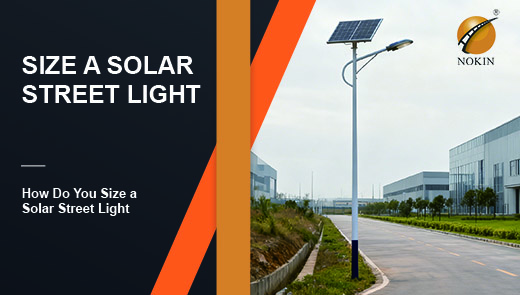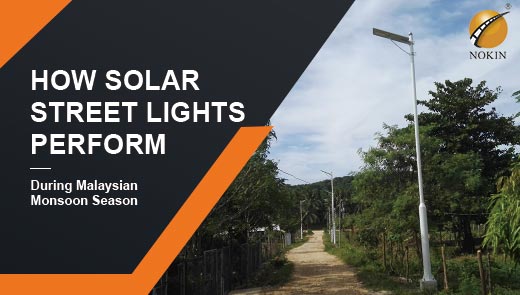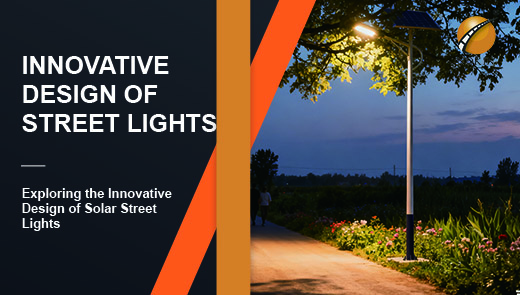How Do You Size a Solar Street Light?
The sizing of solar street lights directly determines their operational stability and cost-effectiveness. Improper selection may result in insufficient runtime, poor lighting performance, or excessive configuration leading to wasted costs. Scientific selection enables solar street lights to achieve three key objectives: meeting lighting requirements, optimizing energy efficiency, and extending service life. This approach is suitable for diverse settings including urban thoroughfares, rural paths, and scenic areas. This article explores core factors influencing solar street light selection and outlines solar panel capacity calculation steps, using accessible logic and practical methods to guide readers toward precise sizing.
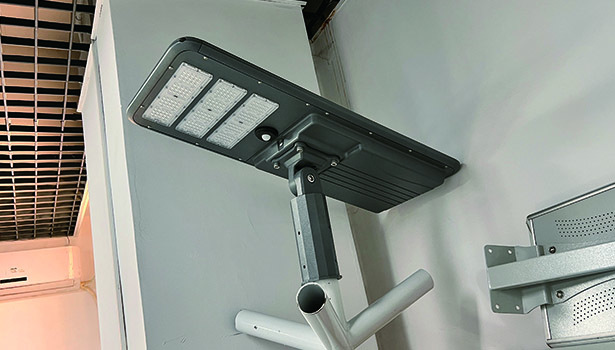
What Factors Should Be Considered When Sizing a Solar Street Light?
Geographic Location and Solar Irradiance
Geographic location forms the foundational premise for solar street light selection. Latitude, climate, and local weather patterns directly determine variations in annual solar resources. Regions with abundant sunlight, such as western or tropical areas, can utilize smaller-sized components, while eastern regions with frequent rainfall or higher latitudes require larger configurations. When selecting models, consult historical solar irradiance data for the installation site to determine average daily sunlight duration and peak intensity. Simultaneously, avoid special environments that impact solar street light power generation efficiency, such as tree shade and high humidity.
In the Northern Hemisphere, solar panel orientation should face true south; in the Southern Hemisphere, true north. Tilt angles should be adjusted according to latitude to ensure stable power generation throughout the seasons. Coastal areas with high winds also require attention to the wind resistance of the solar light poles.
Lighting Requirements and Duration
Three key parameters must be defined for different scenarios: illuminance level, coverage area, and nighttime operating duration. Solar street lights on urban main roads require ≥30 lux illuminance and 10-12 hours of operation, while those on rural paths need ≥10 lux illuminance and 6-8 hours of operation.
Lighting needs directly determine the power rating of LED fixtures, which in turn affects system energy consumption. A balance must be struck between adequate illumination and energy efficiency. The lamp head should be angled downward at 15°-30° to minimize glare and eliminate dark spots. Coverage should be optimized based on road alignment and pedestrian density to ensure uniform and effective lighting.
Energy Efficiency and System Components
High-efficiency components reduce solar street light system size and long-term costs. Prioritize LED fixtures with ≥150lm/W. Monocrystalline silicon solar panels (20%-22% conversion efficiency) outperform polycrystalline silicon (13%-16%). High-quality components exhibit an annual degradation rate ≤0.7%, with total degradation over 25 years not exceeding 20%. Match the solar street light with a compatible voltage charge controller (12V/24V).
Component installation must follow standardized wiring practices with proper waterproofing and insulation. Ensure correct positive/negative polarity connections at the lamp head. Post-installation testing of lighting performance and power generation efficiency is required to guarantee stable system operation.
Step-by-Step Method for Calculating Solar Panel Capacity
Calculate Total Daily Energy Consumption
Daily energy consumption is the core foundational data for solar street light selection. The formula is: Daily Power Consumption (Wh) = LED Fixture Power (W) × Daily Operating Hours (h). For example, a 30W fixture operating for 12 hours has a base daily consumption of 360Wh. Additional load losses from motion sensors, smart controllers, and other auxiliary components must be accounted for, typically estimated at 10% of total power. This prevents underestimation of energy consumption due to omitted peripheral equipment, ensuring data aligns with actual operational requirements.
Compensating for System Losses and Inefficiencies
Solar street light systems inherently incur losses from battery charging, inverters, wiring, etc. The industry conventionally applies a system efficiency factor of 0.7–0.8, reserving 20%–30% energy redundancy. Using the 360Wh daily consumption as an example, the adjusted actual energy requirement for the solar street light becomes 450–514Wh. This redundancy design accommodates non-ideal conditions such as cloudy days and high temperatures. In low-temperature environments, the efficiency of solar street light components further decreases, necessitating an appropriate increase in the redundancy ratio to ensure uninterrupted operation of the solar street lights.

Combined with Local Solar Irradiance Data
The core reference indicator is the “average daily peak sunshine hours,” which can reach 5-6 hours in western desert regions and only 3-4 hours in eastern rainy areas. The calculation formula is: Solar Panel Power (W) = Adjusted Daily Demand of Solar Street Light (Wh) ÷ Average Daily Peak Sunshine Hours (h). For example, with an adjusted daily demand of 500Wh and an average peak sunlight duration of 5h, the solar panel power required for the solar street light is 100W. Actual selection should be increased by 10%. Additionally, the installation angle of the solar street light can be optimized based on latitude to enhance light energy conversion efficiency, counter seasonal sunlight fluctuations, and account for component aging.
Battery Capacity Matching
Core Formula for Battery Capacity Calculation
Battery capacity must ensure solar street light operation during cloudy/rainy weather. The core formula is: Battery Capacity (Ah) = (Solar Street Light Load Power × Daily Operating Hours × Number of Cloudy/Rainy Days × Safety Factor) ÷ System Voltage. Parameters should be selected based on local conditions: 5-7 days for rainy southern regions, 3-5 days for dry northern areas. Safety factor: 1.2-1.3 for lithium batteries, 1.4-1.5 for lead-acid batteries. Example: 100W solar lamp × 8h × 3 days × 1.3 ÷ 12V ≈ 28.6Ah. Select a battery with 30Ah or higher capacity to ensure stable illumination during rainy periods.
Key Considerations for Battery Selection
Different battery types exhibit significant performance variations:
Lithium batteries: Recommended discharge depth ≤80%, capacity reduction of ~20% at -10°C, long lifespan with low annual degradation rate.
Lead-acid batteries: Recommended discharge depth ≤70%, capacity reduction of ~30% at -10°C, faster degradation rate. In low-temperature environments, increase capacity by 10%-20% to prevent reduced runtime. Ensure the battery matches the solar panel power rating to avoid undercharging due to “oversized battery with undersized panel.” Install batteries away from high-temperature and humid areas, and properly connect positive and negative terminals to ensure safety and longevity of the solar street light system.
|
Comparison Dimension |
Lithium Battery |
Lead-acid Battery |
|
Depth of Discharge |
Recommended ≤80% |
Recommended ≤70% |
|
Low-temperature Performance |
Capacity drops ~20% at -10°C |
Capacity drops ~30% at -10°C |
|
Safety Factor |
1.2–1.3 |
1.4–1.5 |
|
Life Characteristics |
Low annual degradation, longer lifespan |
Faster degradation, shorter replacement cycle |
Common Pitfalls to Avoid in Selecting and Matching Solar Street Lights
Neglecting Local Environmental Impacts
Failure to account for obstructions and climate characteristics can cause actual performance of solar street light components to deviate from theoretical values. Dust accumulation may reduce power generation efficiency by over 10%. Install in well-lit, unobstructed locations, avoiding mountain slopes and large trees. Regularly clean debris from photovoltaic panels. In coastal or windy areas, reinforce pole anchoring. In scenic areas, adhere to ecological conservation requirements to prevent vegetation damage and ensure stable operation.
Blind Pursuit of Low Costs
Opting for low-efficiency components may seem to reduce initial investment costs, but power output may sharply decline within six months, increasing long-term maintenance expenses. Prioritize high-quality components with superior conversion efficiency and low degradation rates. Evaluate the total cost of ownership over the solar street light's lifespan rather than focusing solely on the initial price. Additionally, ensure components possess adequate waterproofing and lightning protection capabilities. Select products from reputable brands to prevent operational disruptions caused by quality issues.
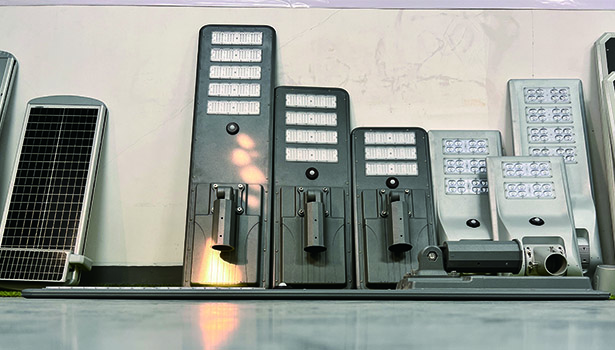
Lack of Redundancy Design
Failure to reserve energy margins for sunlight fluctuations and component aging can cause frequent power outages during winter or rainy periods. Adequate redundancy (10%-20%) is crucial for stable operation. Cold regions require additional system configurations and temperature protection measures, with redundancy ratios scientifically set based on local climate and seasonal variations. Avoid configurations that barely meet minimum standards, as component aging may later render them incapable of fulfilling lighting requirements.
Component Parameter Mismatch
Incompatibility between controller voltage/current and solar panels/batteries causes abnormal charging and equipment damage. Ensure all components share unified parameters (e.g., 12V systems paired with 12V panels and batteries). Post-installation, meticulously calibrate controller settings to verify proper light/time control functionality. Inspect wiring connections for compliance and consult technical professionals for configuration adjustments when necessary.
The core logic for selecting and matching solar led street lights follows this sequence: “scenario requirements → parameter calculation → component matching → redundancy adjustment.” This process must be based on sunlight data and lighting needs at the installation site, combined with scientific calculations considering component efficiency and system losses.
Simultaneously, avoid common pitfalls by focusing on installation details and post-installation maintenance. Selecting component types suited to the specific application ensures stable solar street light illumination, reduces energy consumption and maintenance costs, and allows solar street lights to fully realize their environmental and energy-saving value.

